Destinations to Visit for 5 Types of Personalities
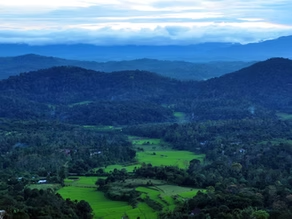
Different people have different tastes, of course, and this applies to travelers as well. You may not know it, but whether consciously or subconsciously, you and the people around you chose destinations according to their personality type and most of the time, consistently. In this blog, we cover 5 major types of personalities – Introvert, Extrovert, Adventurer, Historic, and Romantic – and what destinations you can visit according to your personality type, or if you’re in the mood to explore places you usually don’t go to. Here are 3 of the best destinations for each personality type! [1] Introvert Most people have an introverted side to them, but some are always or most of the time in that personality category. An introvert is characterized by the likely characteristics of wanting to be alone/with a smaller group, keeping to themselves, preferring quiet and less crowded places, and having low social batteries. All these features, while not necessary, make an introvert the perfect candidate for destinations with peace and fewer surprises as well as people. 1. Spiti Valley, Himachal Pradesh – This serene, high altitude destination is perfect for those looking for a quiet and beautiful getaway. Whether you’ll be sipping coffee in a cafe or trekking in the mountains, there is an abundance of peace and space for all travelers. 2. Ratnagiri, Maharashtra – Overlooking the Arabian Sea, this quiet and unexplored town in Maharashtra is surprisingly less known and the perfect destination for those looking for a getaway with less crowded beaches. 3. Kausani, Uttarakhand – Kausani is a quaint village situated in between mountains, offering majestic views and an unforgettable experience all in a quiet and unobtrusive setting and town. [2] Extrovert Extroverts by nature are, well, extroverted – they like putting themselves out there, meeting new people, being around others most of the time, and finding new experiences, all the time. These locations in India will help you make new friends, find new trinkets, explore places better, and have an unforgettable experience. 1. Kargil, Ladakh – Although this town is not as big as its famous counterpart Leh, Kargil offers the best combination of stunning views with bustling life in a small town where you can meet a host of different people and enjoy as a group. 2. New Delhi, Delhi – The city of Delhi is very well known, and its people are very friendly too. It is perfect for extroverts – with its many destinations, varieties of cultures and people, and different crowds in every corner, you’ll never run out of things to do and people to meet! 3. Dharamshala, Himachal Pradesh – This city, although quaint, is very well known to have a wide range of people in its midst – it is one of the ultimate hippie hotspots of India and you can meet people from a wide range of countries and walks of life here. [3] Adventurer Being addicted to an adrenaline rush is a very real thing, In India, there is never any shortage of adventures you can go on, but these places will give you the memories of a lifetime: 1. Bir Billing, Himachal Pradesh – The village of Bir, situated in the midst of mountains and a distance of two hours from Dharamshala, is very well known for the adventure sport of paragliding, although you can also trek and do a variety of other activities in this village. 2. Har ki Doon, Uttarakhand – Har ki Doon is a beautiful valley situated in between the Garhwal Himalayas of India and the valley is perfect for trekking. With this beautiful cradle as the destination, a trek to Har ki Doon will definitely boost your adventure spirit! 3. Manali, Himachal Pradesh – The city of Manali is perfect for all kinds of travelers, but especially suited to adventure travelers since it offers access to the thrilling Rohtang Pass trek, and has a variety of treks and destinations to offer – you can trek, do paragliding, and even bungee jump in this magnificent city. [4] Historic Whether you’re a historian or just a passionate learner, you’ll love these destinations. Although there is something to learn from and in every location, these places have a deep history rooted in them that will excite your inner academic and keep you in awe. India is a country with a long and expansive history, and nothing shows this better than these places. 1. Varanasi, Uttar Pradesh – Home to temples as much as 1000 years old, this city’s exquisite architecture and culture will stun you. There is something to learn at every corner, and the city is known to be one of the oldest in India. 2. Hampi, Karnataka – A UNESCO World Heritage Site, this city is known for its magnificent history spanning decades and well-preserved ruins. It used to be the wealthiest city of India hundreds of years ago and still boasts structures with histories that will astound you. 3. Ayodhya, Uttar Pradesh – The city is well known as the setting for the epic Ramayan and is believed to be almost 9,000 years old, previously the stronghold of the kingdom of Kosala around 2,000 years ago. There is much to explore and see in its jilted streets, old buildings, and protected sites such as the Kanak Bhavan, Hanuman Garhi temple, etc. [5] Romantic A romantic is not often vocal about their romantic characteristics – but all kinds just want a good swoon-worthy story and a beautiful place to spend with their soul mates. These destinations don’t all have a wonderful story, but they are destinations where there is just enough crowd to not get boring, and just enough peace to spend time together. 1. Imphal, Manipur – the city of Imphal has a history and an untouched charm –
5 Traditional Toy and Craft Communities in India to Support Post the Chinese Ban

If you’ve been following the news, you’ll have heard about the discouragement of Chinese toys being placed by the Indian Government. Although not an official ban, India has made it virtually impossible for Indian importers to import Chinese toys by subsequently placing a stringent standard procedure that will demand a certain quality from Chinese toys – that more than 90% of Chinese toy producers will not be able to meet – along with a hiked 60% import tax on toys from China. India’s toy market is heavily dependent on its Chinese counterpart, with it being the largest toy importer from China (an estimated 70% of total toy exports by China are to India) and suffice to say, the Modi government’s latest reform against China over recent tensions will certainly hit the country hard, especially after the many bans and hikes placed in the past few months on Chinese products, of which we are very dependent on. What will it take for this recent hit back to be successful? A number of things, chief amongst which is the problem of supply and demand within India. Most toys in a majority of toy shops across India are Chinese made, with a small portion of traditional and miscellaneous toys being Indian made. Although Indian producers and handicraft communities have a headstart due to a major fall in demand (to around 10% of what it used to be) because of COVID-19, there is still a gap that needs to be filled as quickly as possible – Indian production of mass-made toys needs to be boosted, along with the encouragement of traditionally crafted toys. Here are 5 communities to support when you travel around India – these are all forms of crafts and arts that are facing extinction as they don’t provide the variety of toys usually demanded by customers, and the intricacies Chinese toys offer. 1) Channapatna Toys Made in: Channapatna, Karnataka, available at highway shops, toy stores, handicraft stores across Karnataka The beautiful range and variety in Channapatna craftsmanship Channapatna in the region of Ramanagara, Karnataka, is a town in South India known for its large but currently dwindling community of wooden toy crafters. The town is an attraction on the road from Bangalore to Mysore and called ‘town of toys’ in Kannada too. The crafters use mostly Milkwood and Ivory wood for the toys and eco-friendly dies as well which don’t harm children. The art form of Channapatna is said to have originated from Persia as the famous carving style and work on wood was revered and brought down to India through the Persian crafters. Channapatna style includes a variety of small and large toys, cooking utensils, miniature sets, even bags/bangles. The use of a pliable and well-structured wood makes it easier for handicrafts to make a variety of shapes and implements, although the skill is very hard to establish and perfect. Check out this amazing collection of stunning pictures of the art taken by Travel and Photography which will convince you to visit the town and see its craft! This art form was heavily affected by the pandemic as crafters are dependent on roadside toy shops and tourists across the state that halted suddenly. You can support these artists very easily if you’re located in Karnataka – just drive to your nearest highway/Kamat hotel, and you’ll find a variety of them on display. Buying these low-cost trinkets can go a long way to improve your living spaces, and bring livelihood to the crafters struggling due to the pandemic. 2) Rajasthani Puppets Made in: Mainly Jodhpur and Jaipur, Bhatt community, Rajasthan Rajasthani puppet makers use local softwoods, paint, and cloth for these colourful pieces of art The string puppets of Rajasthan are famous as ‘kathputhlis’ in the local language and the main cities where they are prepared are Jaipur and Jodhpur. The Bhatt community makes these puppets as well as performs with them, a traditional art form that has been prominent for many decades. India is one of the oldest civilizations in the world, also one of the first to start crafting and creating toys/implements and trinkets close to them: many existing techniques originate from Rajasthan, where the craft of puppets and dolls is highly respected. These puppets are usually made from traditional and natural cloth and dyes available within the state, and the shows are performed by the traveling Bhatt community. When you travel to Rajasthan, especially within the popular cities of Jodhpur and Jaipur, you’ll very likely spot these puppet shops and their crafters. Buy the dolls for a very additional flair to your space or for children, or even support the Bhatt community by witnessing a puppet show authentically in Rajasthan. The Third Eye Traveler has a great blog on exploring Rajasthan, on which basis you can plan your safe visit and explore this traditional craft. 3) Pachisi/Chausar Made in: parts of Mysore, North India, available online Pachisi is a fascinating and aesthetic ancient board game Pachisi is one of the many traditional Indian board games that are slowly being driven to extinction with the advent of mass production and variety demanded within a large range of toys. The board game, constructed of local textiles and marked with embroidery done by crafters, is a very important part of India’s history – the Mughals enjoyed the game tremendously, and multiple kings and dynasties are known to have hosted the game in their parlors. It is now not as widely known, particularly by the current generation due to modern changes in the industry. There are a few startups concentrating on reviving the Indian handicrafts and arts, based in multiple cities across India that are producing and employing communities for the crafting of this board game, but largely it is still relatively unknown. These board games, like Pachisi, Bhag Chal, Chauka Bara, and Pallunguli, all traditional and ages-old, crafted by
India’s Strained Foreign Relations With China And How It Impacts Tourism
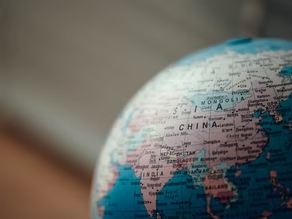
Since independence, all of India’s successive governments have worked on building better relations, particularly in trade, with its neighbors and other countries. This policy was pushed on more with the advent of the Modi government in 2014, with a major focus placed on creating better and stronger ties with other countries. In the past few months, however, India has been facing a major challenge in its northern borders with China, an issue that started in May and continues still, getting more and more worrisome. Historically speaking, this relation has always been rocky at best, but placed mostly in the backburner for the sake of trade, because India does, after all, trade goods worth millions with the country. With the rising border tensions concentrated in the Ladakh region and the death of Indian soldiers due to a face-off with Chinese troops, there has been a wave of nationalism that has affected the country. With a prominent boycott of Chinese goods and software still taking place within the country, the process is slow but successful. This wave of nationalism has brought to attention the other fragile relations India is dealing with consistently with its neighbors like Nepal, Tibet, Sri Lanka, Bangladesh, etc. that can, in fact, be traced back to China. What does this have to do with the tourism industry? It’s important to keep in mind, firstly, that a large number of countries in Asia, predominantly smaller ones, have debts to China and India, two of the fastest-growing economies in the world who can afford large loans to other countries, which establishes them as two giants, not just economically but also through land space, in Asia – relations between the two affect a number of countries. Secondly, and most importantly, multiple countries in the continent are dependent on tourism as a revenue generator, for example, Maldives, Indonesia, Thailand, Bhutan, India, etc. They are dependent financially and/or for employment on tourism, whether it is a big chunk or a small sector. With these facts established, let’s get into the 3 most important ways that China-India relations can affect the tourism industry, either directly or indirectly. 1. Border tensions and land disputes The beautiful but currently dangerous borders of India China is, of course, one of the countries India is currently having a land dispute with in terms of claimed territory and borders, concentrated towards the border in Ladakh which India shares with Tibet, officially a part of the republic. Did you know, however, that India is also facing land disputes with Nepal and Pakistan? the two countries earlier released new political maps of their countries which claimed regions in India as theirs, with Pakistan claiming the whole of Kashmir and sections of Gujrat as a part of the country and Nepal releasing a new map with towns and sections of Uttarakhand (Kalapani, Limpiyadhura, and Lipulekh areas) as Nepal’s territory. Many political experts believe both had been influenced in some way or the other by the Chinese government to carry out these changes. Whether this is correct or not, the fact is that these map changes are not only complicating relation issues for India but also hinting to more disagreements that can cause land loss. While it is unlikely these maps will be accepted, it still means that the land being fought over may just get more dangerous and even cordoned off for tourists. Ladakh, Kashmir, and Uttarakhand are some of the most tourist-heavy destinations in India and an escape from the densely populated southern cities for many. These issues, whether remaining stagnant or becoming more problematic, will cause many problems to the tourism industry. Small vendors and shops in the areas dependent on tourism, already hit hard enough by COVID-19, will suffer even more due to these border issues. Potential Problems: A hit to tourism in the areas where there are land disputes with other countries, mainly Ladakh, Uttarakhand, Kashmir, and Himachal Pradesh. This can cause a hit to revenue, increase in danger and possibly lesser enthusiasm in travelers to these spots. 2. The Indus Water treaty The mighty Indus River The Indus river is one of the main sources of water for many states of India. It originates in Tibet, which is a part of the Republic of China, and runs in Pakistan, India, and Tibet. The treaty has, for years, made sure of fair usage and distribution of the water between the countries, mainly India and Pakistan, who have upheld the treaty now for close to 60 years. Next to the town in Tibet closest to India, there is a giant hydroelectric dam built on the Sengge Zangpo River (Indus), just 80 km from Demchok, a Ladakhi village that sits on the undefined Sino-Indian (China-India) Border. China has, in the last few years, rapidly ramped up development along the river, with satellite images showing multiple projects that have sprung up in Tibet funded by the Republic. Although the government says these are for faster development of the region, multiple experts share concerns about the nature of the development. Many say this is one way China is trying to impact India – and this will leave a huge scar. The river runs through Ladakh and provides water for irrigation and other purposes to provinces in Himachal Pradesh, Rajasthan, Haryana, and Punjab. These states will be directly impacted, and so will tourism – with the flourishing tourism industry in Himachal and Ladakh, as well as the role of water sports in these attractions, any changes made by China such as controlling the water source through built dams, redirecting within Tibet, or more dams and hydroelectric projects that can majorly impact the water flowing into India will hit these states hard in multiple industries. Potential problems: Any control or hold back of the river to even the smallest extent can drastically hit infrastructure based along the river and in the states hit the hardest. Agriculture will be hit
10 Hollywood Movies Shot in Stunning Indian Destinations where you should travel
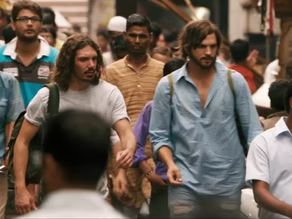
With beautiful architecture, deep history, multiple cultures, and natural beauty, India is a mix of different people and locations, providing a great background for different movie scenes and shootings. The people are loud and welcoming, the places historic and awe-inspiring. Many directors from the US, Canada, and Australia, among various other countries, have chosen India for the scenes of their movies due to the contrasts, history, and rich cultural background it provides. Some directors may play up this and make it a big part of their movies, others yet may choose to let the richness of the setting be, framing the characters well. If you’re looking to travel and personalize your own experience, head over to our travel support page now! “India is a curious place that still preserves its past, religions, and history. No Matter how modern India becomes, It is still very much an old country.” Anita Desai We’ve picked some of the best Hollywood movies based on India, some you may not have heard about and some you never knew were shot in India. Either way, we recommend you watch all of them, if not for their fabulous storylines then for the stunning Indian destinations they feature! Salaam Bombay The Namesake Eat Pray Love Viceroy’s House The Darjeeling Limited Jobs Trishna Lion Dark knight rises Million Dollar Arm 1. Salaam Bombay Features – Outskirts of Bombay, Bombay city Year – 1998 This highly acclaimed popular film directed by Mira Nair broke many hearts and garnered international praise for her risky choice of plot and sensitive topics touched upon with all the expertise of brilliant direction. The film follows a little boy, Krishna, who is taken into the chaotic, brutal, and unforgiving slums of Bombay following a string of unfortunate events. Nair introduces a range of characters to the setting, centering them around the city’s brothel, touching upon topics such as poverty, prostitution, child rape, enslavement, drug addiction, and child labor. Although she does so smoothly, incorporating them into the setting, viewers get a brutal glimpse of the unforgiving streets of Bombay and its state in the 80s – 90s. The movie captures the rush and adrenaline of Bombay, its old streets, older monuments, and the ever-present poverty. This movie will give you shots of what Bombay is, and make you see the glamorous city in an entirely different light. 2. The Namesake Features – Calcutta, Agra Year – 2006 The Namesake directed by Mira Nair is a movie that touches upon Indian-Americans and the cultural identity crisis that is often experienced by them. The movie, screened in India, Japan, US, and Canada, did well in theatres and received praise for the topics it tackled. The story follows Gogol, a man born and brought up in the US and estranged from his Indian heritage unlike his parents, who then goes on to explore and understand his culture through the city of Calcutta/Kolkata where his parents lived before moving to America. The movie captures the contrasts of both cultures, depicting scenes of the beautiful, messy streets of Kolkata, with a focus on Howrah station and Shantiniketan. The scenes range from Gogol exploring the old city streets of his hometown to getting off an auto near the busy Howrah station. It also has short depictions of the city of Agra (filming the iconic Taj) and its busy streets, along with the older tuk-tuks used in some parts of Kolkata. The movie succeeds in capturing the best parts of Calcutta – its people, its culture, its language, and its history. Visit the locations of Kalighat, Howrah station, Howrah Bridge, Shantiniketan, Bengal markets, and the winding, rich streets of the city of Calcutta for a feel of the movie and the culture that eventually sways all Indians back. Travel to Calcutta now 3. Eat Pray Love Features – New Delhi, Pataudi, Mirzapur, bits of Gurgaon Year – 2010 Elizabeth Gilbert’s 2006 memoir Eat, Pray, Love (one of the classic Hollywood movies based on India) was a game-changer for many readers across the globe and adapted into a film four years thereafter. Directed by Ryan Murphy, the blockbuster follows the journey of Elizabeth (played by Julia Roberts) across a journey of self-discovery where she ‘Eats’ in Italy, ‘Prays’ in India, and experiences the balance of ‘Love’ in Indonesia. What we loved about this movie is that the director and producer chose locations, people, and lines with care while filming in India, not wanting to get details wrong or offend the culture in any way. Elizabeth sees in her journey Delhi, a city which’s speed and chaos she is fascinated by. You’ll spot famous places like the India gate and bustling Hauz Khas market, but only for a short time as Gilbert moves to the quiet village of Pataudi, Haryana, where she has her real spiritual experiences, exploring the town and its devoted residents, the famous Hari Mandir ashram, and other spiritual locations. The filming places special emphasis on the ashram, its quietness, the history of the architecture, and the beliefs of the people, respecting the details and importance of each. Some shots are also taken in the town of Mirzapur (yes, like the show) in Uttar Pradesh, showing its small local eateries, the chai stalls, and its small colorful buildings. We highly recommend you visit Delhi with its bustling markets and streets, then on to Pataudi, exploring the quaint town and the famous ashram, and Mirzapur, with its unique layout, busy roads, and colorful buildings for the complete Eat Pray Love experience. We recommend you read this blog by Breathe Dream Go on her take on the movie, the story of Julia Roberts’ amazing experience in India, and what the film stands for. 4. Viceroy’s House Features – Jodhpur Year – 2017 Viceroy’s House is a British-Indian historical film with multiple storylines
Why Millennials Are Opting For Sustainable Travel: 5 Effects of Travel on The Environment
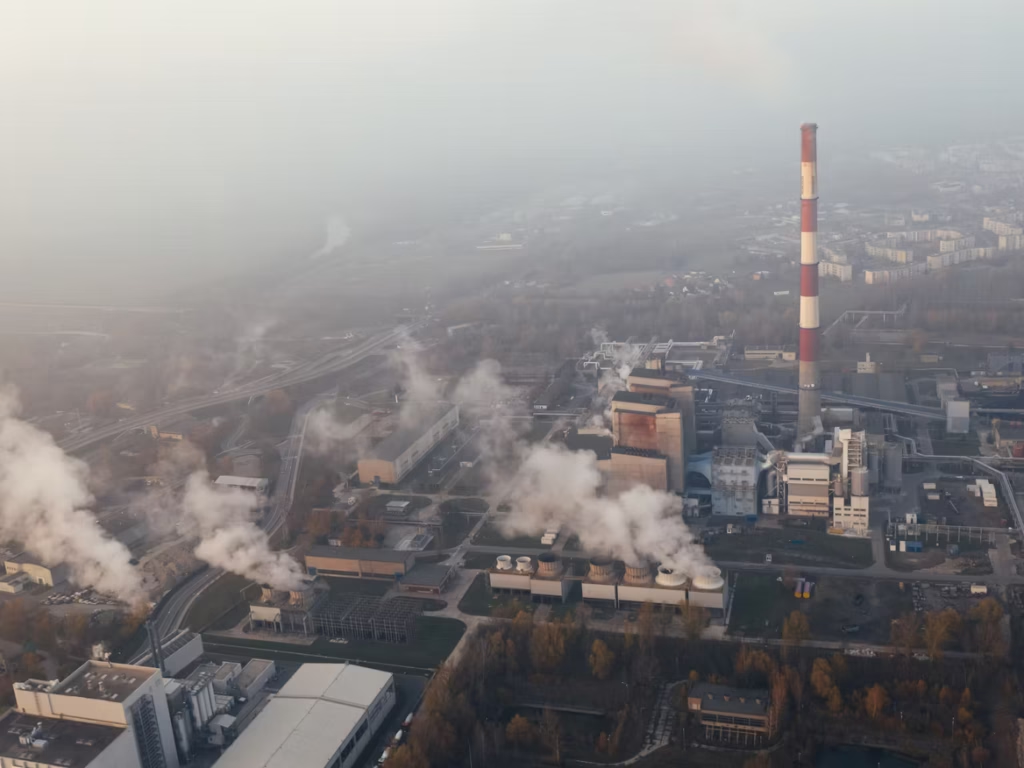
A little under a year ago, Greta Thunberg, a popular climate change activist, spoke passionately and strongly about the need for change, urgently and sustainably. Although this brought a lot of publicity to the massive youth movements against global warming, it did little in terms of real change that can be created and implemented. Greta would even refuse to travel by air when she was invited to different countries due to the large carbon footprint left behind by air travel and instead relied on a small boat with a small crew. Large protests around the world have for years demanded change The effects of travel on the environment are far and wide, but also relatively unknown or ignored. Not only does travel speed up global warming, but it also causes harm to ecosystems, communities, and the use of finite resources. This issue is pressing, important, and something that needs to be understood and addressed before its too late. We know that as a travel company, it may come across as odd that we speak about this. But awareness is important, and so is the promotion of sustainable ways to live and travel. At The Tarzan Way, all our experiences are targeted towards sustainable change in communities, small societies and villages, and individuals such as farmers and fishermen. But we still have a long way to go – and understanding and accepting the problem is the first step to making a change towards and for it. There are some really great blogs too that we were inspired by and recommend reading, such as this one on sustainable travel and how to do it. Here are the main effects of Travel on the environment, that you can change and work towards fixing because even small steps matter in every way. Global warming and Travel – the humungous carbon footprint Flights are a drain on resources – but experts say they won’t stop anytime soon It is estimated that around 6-7% of total year-on-year global warming is caused by travel by flight, and a few points less than this number is the share of cruises in the same. The two methods of travel use up huge amounts of fuel, and not much is really going to change because fuel usage is convenient and cheap, although incredibly harmful for the environment. One average round trip from a place and back in a flight can cause the same amount of greenhouse gas (GHG) pollution as 50 cars in a year, per person. It takes a lot of fuel for flights to fly and land safely, and many companies get close to bankruptcy due to the expense of running planes that use so much fuel on a daily basis. Although some American airlines like Delta have pledged to use more sustainable fuel and change the way fuel is used by planes, long term change won’t start until companies are pressurized into it and realize the cost of their actions. Fuel used to power flights is dangerous not just because of the carbon footprint but also the consequences of exhaust emitting carbon molecules into the stratosphere. Oil is a scarce resource – and the cost at which we guzzle it every day in all our activities is simply not worth the convenience it brings. There needs to be a shift towards green energy, and it needs to be fast. There are various resources you can read on sustainable travel and sustainable flying in specific, which is a less developed idea and movement at this stage. What you can do – as much as possible, pick alternative modes of transport when you’re traveling for short distances. For longer distances, flights are pretty much a necessity – what you can do is chose wisely. Research on which companies have implemented change, which are investing in low fuel planes, etc. These factors are important and will help the money you spend on flights go to a good place, even if it’s for years onwards. Don’t put for cruises – they’re an unnecessary luxury, generate a lot of waste, use up too much fuel, and are especially dangerous due to the risk the COVID-19 pandemic brings. Reduction in Biodiversity If we continue our wasteful use of resources, there won’t be any biodiversity We know you see it on the news every day, read about it frequently – some species or the other is endangered or extinct and this is increasing at a rapid rate. You may wonder, how does it really matter or impact me? It’s a good question, and something to address first. Biodiversity is extremely important because of the ecosystems dependent on them – each and every species has a relation with multiple others and their existence, no matter where their position is in a food web or triangle. When one species reduces in number or goes extinct, it threatens the entire ecosystem – this is bad for us because we’re dependent on a number of them for more things than you’d guess. Each species has its role and place – disturbing that can have devastating impacts. For example, take bees – their threatened existence is something to worry about not just in terms of our honey supply, but also for the essential process of pollination that bees carry out. Without them, seeds wouldn’t get from one plant to another, our agricultural systems would collapse, and the ecosystem dependant on them (they control the population of small worms, pests, etc) would face the same fate. So what does travel have to do with this? We bet you’ve visited a park or two in your travels, or seen the interactive zones in large ecosystems. More often than not, human encroachment actually results in reduced populations and a disturbance in their systems. Some parks do follow proper procedures, but many don’t too. Moreover, those deep jungle resorts and hotels in forests mean clearing the land completely, damaging
6 Reasons Why Travel Booking in Advance is a Smart Choice post COVID-19

COVID-19 has been devastating for the world. The small things we used to take for granted are coming into focus and making us more appreciative, and one of those is travel – travel isn’t just the vacations we take, its the commute from home to the office, its the spontaneous weekend plans and drives, the freedom to pull up in a highway restaurant and eat without worries. It’s also the business trips we take, commuting between cities, meeting new people, going to new places. Of course, travel is taking a back seat now in these times, and rightfully so. But as the world starts to open and everyone begins cautiously stepping out, it’s important to keep in mind the various risks associated with the same. One of these is traveling post-COVID and being exposed to the coronavirus, to the risks that come with it. After the pandemic, travel will be safer, and all the more important – for this reason, even in times of uncertainty, advance booking will be extremely important post-pandemic, and a part of this is also traveling insurance, finding the right places, and knowing when and how to do prebooking/advance booking. What is advance booking, the benefits of advance booking, when to book in advance, and how to save money while doing the same – all these questions will be answered in this blog, your guide to the advantages of advance booking. Generally speaking, advance booking/prebooking involves confirmation and payment for the different stages of travel – traveling, accommodation, intercity travel, and other related services. So why should you book your tickets and plan out your trip in advance? Here are some reasons. 1] Travel Insurance, the new Holy Grail Travel insurance is extremely important, especially now Travel insurance is an insurance policy that offers compensation for any travel-related losses, personal /medical and delays and cancellations of flights during your travel within India or internationally. Many people lost a lot of money when countries and cities started shutting due to COVID, because of thousands of booked flights, tours, hotels, etc. canceled last minute. This risk is still prominent – outbreaks of the virus and hotspots crop up every day, and for whatever reason you may be traveling you need to be protected from the same. Not only does it provide financial security, but it also allows for medical security in possibly unknown and new places you may be in, in case of an outbreak or possible infection from the virus. So what does booking in advance have to do with this? Travel insurance is often offered for flights and trains only initially and gets much more expensive the more you delay it. There are also more options available when you opt for travel insurance earlier on your trip, from different companies and different deals. Another benefit of opting for travel insurance earlier on is having the safety net for longer, so if you need to travel earlier than expected or have unexpected cancellations from the flight or accommodation or any other service, you can get a full refund from the insurance. There are 3 kinds in general – medical, luggage, and cancellation based insurance. The main benefit is that travel insurance, in particular travel medical insurance, is a huge asset for traveling post-COVID. Check out Nerd Wallet‘s comprehensive guide on travel insurance in a post-pandemic world, and why it is important. 2] Cheaper rates and better deals You can avail better travel deals and book for cheaper in advance When you book early, it is more likely that you will find deals that are better and cheaper, ones like you’ve never seen before because mostly everyone tends to book at the last minute due to uncertainties. However, if you combine travel insurance and early booking, chances are you’ll find great deals and discounts to save money, get better offers, sometimes get upgrades. Why is that? because travel companies, especially in these times, want more people to book early so as to reduce their uncertainty and have a fixed possible income. They basically want you to book early, and they’ll return the favor you’ve done to them generously. You can also find cheaper rates by booking flights, trains, buses, etc. tickets earlier because it allows you to access discounts and coupons available for the time you are booking in as well as future deals offered to you. Another point to note is that many flight services let you buy memberships for lesser prices and access more early bird offers that way. For more about booking cheap flight tickets and getting ahead of deals, check out Thrifty Nomads‘ blog on the same – it’s informative and detailed! 3] Flexibility in your itinerary Flexibility and spontaneous changes are key in travel One of the biggest advantages of booking tickets and trips earlier is having more flexibility in case of different situations cropping up, the need to change plans, or even just a spontaneous shift in destinations for vacations and trips. This flexibility is especially important for people who like to go with the flow when it comes to travel, make it up as they go, or change different things in their plans. Flexibility is great not just because you can deal with new changes but also because it allows you to change last-minute based on unexpected circumstances, such as maybe a coronavirus hotspot discovered near to your destination or any other dangerous/risky situation that may crop up. So if you plan to take a family Christmas trip in the winter, but last-minute change your destination, you can cancel for that, and in the case of a COVID hotspot being warded off you can change for it as well – keep advance booking in mind the next time you need to or want to travel. Advance booking/pre-booking your travel or destination or accommodation allows you to change things quickly and without any repercussion
Why Corporate Trips and Team Building Travel Experiences are Important

Corporate travel, especially corporate travel in India, is underrated, less invested in, and often ignored because of the lack of benefits that many managers and companies see, although there are multiple. There are many benefits of corporate travel – leadership development, team bonding, self-development, and many more. In life and in business, if you want to go fast, go alone. If you want to go far, go together. Teams should be able to act with the same unity of purpose and focus as a well motivated individual. Bill Gates We know that there are many questions related to corporate trips and team-based travel, such as what are corporate trips, is corporate travel expensive, corporate travel trends, the importance of corporate travel, etc. There are multiple alternatives when it comes to corporate travel – you can hire an agent, a travel agency, self plan a trip, or have an in-house HR/front desk employee taking up a relatively new positing now popular in companies as a corporate travel manager. So why is corporate travel and taking group trips so important? We know that in these times of coronavirus and the pandemic it’s really hard to think of travel – but from a business perspective, the investment is well worth the time. Corporate trips, post-COVID-19, will be even more important than before after months of working from home and no office/personal interaction. The future of travel is uncertain, but a corporate trip/business travel post-COVID-19 is going to be extremely essential. Stressful times call for fixes in motivation, and corporate travel is just as important for improving employees’ psychological state as it is for company culture and improved productivity. So why exactly is a corporate trip so important? Self-understanding and self-development Self-understanding is key to workplace and personal success One of the keys to better corporate culture and a strong bond between employees, managers, and executives of a firm, is to consider each employee in equal regard in terms of the importance of their self-development and mental safety/satisfaction. When employees are treated as long term family instead of short term replaceable assets, there is not only an increase in productivity and loyalty towards work but also a long-standing idea of the goodwill of a company that sustains through and even after their term with you. The first step to this is an emphasis on self-understanding for the furthering of everyone’s mutual targets and goals. Self-understanding involves the usage of simple activities, conversations, time off, etc. that furthers the person’s understanding of who they are and their ultimate goals. A company should always promote this, both for the development of an employee and to place itself in higher regard in an employee’s mind. Travel plays a huge part in this – corporate trips allow employees to reflect on what it is they are working towards, the role they play in a company, their ultimate opinion of it, and how they can utilize their time and efforts best to impact everyone’s lives and time as well. It is easy to get into the rat race, but to stop and think is a luxury often very few can take – a company should make corporate trips and team bonding a part of the culture so that there is higher retention and people in the company understand themselves, and therefore their contribution, better. Plan for trips that place an emphasis on doing menial tasks that allow for deeper thinking and conversations between all departments and levels of employees to encourage deeper self-understanding and development. Check out this blog by the Life-long Learner on self-improvement over a lifetime for a better understanding of the process and effort behind it. Travel definitely encourages self-development, and there are detailed articles and many blogs, such as this one by the Worldpackers, that emphasize on it! Travel is a stress buster Companies need to recognize and fix when stress becomes a part of the workplace The Tarzan Way has hosted more than 1,100 travelers and in our lengthy experience, we’ve seen people travel for many reasons, but all agree that travel makes them happy, content, and see the big picture of life. Your executives, managers, and employees may not be passionate travelers, but it is undeniable that going far from normal life and to a relaxed setting can monumentally help stress and large workloads. Keep in mind that travel isn’t an escape or respite from that workload, but a more slowed downtime that allows for employees to gain perspective over the usual race for success. This is extremely helpful to reduce stress and combat anxiety and other mental health problems your employees may be facing (and often don’t tell their managers about). It also allows them to return to their jobs energized, motivated, productive and having a better, clearer picture of where their focus should be and currently is. Corporate trips, no matter how short they are, are focused on building rapport, improving on relations, and doing exercises/simple activities that can reduce stress, which can negatively impact work in a corporate setting and lead to major problems for employees. Companies have a responsibility towards their employees (no matter their rank and status) to treat them passionately, with empathy and understanding, and keep in mind their sufferings or situations. An article by Forbes supports this claim, and if you want destination ideas or more inspiration on planning a trip – check out The Wandering Soul’s Wander Tales’ blog on leaving stress behind in a beautiful destination that will surely inspire you and convince you of the benefits of corporate trips. Teams understand each other better Teams spend a large amount of their hours in a corporate setting We know you’ve heard this before, but this is something essential – team bonding is extremely important for the team to function smoothly and issues dealt with well and smoothly. Corporate trips can be focused on particular teams as well
21 Safety Measures for Travel During and After COVID-19

The global Coronavirus pandemic has affected millions of lives directly or indirectly and has changed the whole course of many industries, careers, and companies. Many countries are, however, seeing life come back to normal, if not for every citizen, then certain pockets of states and cities. As life resumes in a different way for thousands of people, we have started to gather our best research and data on what we can do to change travel for the better, adapt and help others adapt. For those who are traveling or planning to travel soon or in the future (for practical, urgent, business, or leisure purposes), we’ve put together our best and researched tips on staying safe while traveling, because this threat will be prominent for months and maybe years to come. 1. Research on different ways to travel A caravan on the beach sounds heavenly We know that when you think travel, the same few avenues pop up in your head – by airplane, by train, by bus, etc. Although these are the main ways and won’t ever go out of style, try doing something different. There are many curated lists of different ways to travel in specific countries, like horse-pulled houses in Ireland, floating boathouses in Kerala, India, or even airships in the US. This is the time to explore new places and methods because you’ll be pushed out of your comfort zone. Our chosen picks include road trips, rural village exploration, caravan travel, and many more – check out our curated experiences. For some tips on vehicle care and road trips (which can be your best bet for now!), surf this great blog by Where is Tara. 2. Where should you travel? Find unexplored, stunning locations One essential question, of course, is the destination you should travel to. Your travel location is obviously fixed if you’re going for business/practical purposes, but for leisure travel, once you decide the method of traveling, decide a location after doing all your research. There are many government websites and WHO trackers that can tell you the exact cases in each city, outbreaks, location of outbreaks, etc. Accordingly, you can select your destination to a precise location. 3. The importance of Masks Find graded, medically approved masks Despite many claims, masks are one of the few proven ways to fight the onset of the virus. However, there are many different kinds of masks, and it can get confusing to choose one. Go for a thicker material, but not so thick that it restricts breathing or otherwise makes you feel very uncomfortable. Every country has it’s own mandated, clinical standard mask that you can purchase for extra precaution. Mostly, though, a cloth mask that can filter smaller particles and covers the mouth and nose properly will do the job. 4. The importance of Gloves Gloves are perfect for long distances or even grocery shopping Gloves may not be a necessity, but it is a very important precaution. Virus particles can live up to 12 hours on metal surfaces,1 day on cardboard, 3 days on plastic, and up to 4 days on paper money. That’s a lot of time for the particles to transfer, and gloves are a great solution if you can’t /won’t remember to wash your hands/sanitize regularly. There are many kinds of gloves available, but for short term periods, disposable rubber gloves work well. However, gloves can’t prevent infection as well as just washing your hands well with soap can, so wear them less and when you’re traveling to crowded or otherwise tourist areas with many surfaces, and learn the proper protocol for removing gloves. 5. Let’s talk sanitizer It’s important to find the right sanitizer We know this is obvious and an always repeated precaution, but hear us out. Hand sanitizers can protect you against disease-causing microbes, especially in situations when soap and water aren’t available, which is the best-proven method of prevention. They’re also proven to be effective in reducing the number and type of microbes. The best kind is alcohol-based sanitizers, usually containing 60-90% alcohol – they kill more microbes than the non-alcohol ones. Most countries have ways to label/mark sanitizers that are medically approved – ask your local pharmaceutical shop for more information, and do some of your own research on sanitizers. 6. Hotel safety measures Make sure everything is fresh and disinfected Hotels can be a scary thing to consider during a pandemic like this, but if you can take the necessary precautions there’s no reason to be hesitant. First of all, research about the city you’re going to and ensure it doesn’t have any major outbreaks. Locate a hotel in an area that preferably hasn’t seen any cases, or very less at least a month or more ago. When you book the hotel, call them in advance and tell them you want a full room clean when you get there, in your presence, so you can ensure the pillows are changes, bedsheets and blankets fresh, and the whole room properly disinfected. When considering room service, make sure you’re confident the kitchens are clean and safety protocols followed, and whatever cutlery you get, wipe and wash it before using. 7. The Five keys to food safety The essential WHO mandated keys to food safety The five keys to food safety are a set of food safety regulations/rules that households and kitchens should follow, found on the WHO website. The core messages of the Five Keys to SaferFoodare: (1) keep clean; (2) separate raw and cooked; (3) cook thoroughly; (4) keep food at safe temperatures; and (5) use safe water and raw materials. These are important to follow in households of course but should be definitely followed in industrial/restaurant kitchens too. When you go out to eat, which can be inescapable when traveling, ask that they follow the basic food safety guidelines and observe if sanitation practices like a clean kitchen, gloves, masks,
13 Reasons Why Your Vacations Will Drastically Change Post COVID-19
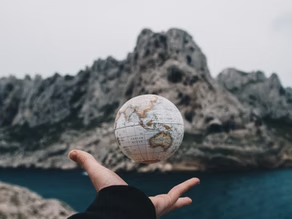
The COVID-19 pandemic has drastically changed things around the globe, some particular to countries and others felt all over. It continues to cause the loss of many lives and jobs all over the world but has also allowed the earth time to recover from human activities and families to spend more time together. Travel, which is something we all probably took for granted before this pandemic, is going through a huge shift. There are many safety issues that have come into focus with traveling and many changes to come with the way we traverse between even the closest and most common destinations. Forget about that backpacking across Europe trip, because now even traveling between the grocery store and your house is a dangerous journey. Yes, there will be drastic changes in the way we live and travel from now, but are all of them bad? Are all these new changes necessarily as depressing as they seem to be? Let’s look at our handpicked 13 reasons why (pun intended) travel is going to change! 1. Masks, gloves, and sanitizer – the Golden Trio of essentials Masks have now become the new smartphone The new alpha delta beta has arrived, and it’s unfortunately not as exciting as it sounds. Masks, gloves, and sanitizers will now become literal essentials for all kinds of trips, be it to the local hardware store or a short business trip. You’ll be hard-pressed to find people without their masks on for at least the next 8-10 months in all kinds of public spaces, whether internal or external. When we talk about air travel, this will be a definite show, and you should ensure that you carry at least your mask and a small size sanitizer when going anywhere – if there’s one thing research and experience has proved, it’s that personal hygiene and distance is a sure way to protect yourself from the virus. There’s a blog on The Unicef website that has a lot of useful, research-based information on staying safe and keeping your family safe during the virus which we recommend everyone should read. TTW Pro Tip: Make sure that when you come back from a trip to the grocery store you wash/clean with sanitizer all your items for precaution against the virus – we don’t know how many hands have touched that block of cheese or box of cereal. 2. Old school road trips will make a comeback Road trips are memorable, less expensive, and much more fun A report published by The New York Times said that interest in RV and car purchases has risen exponentially due to Millenials preferring to hit the road. The interest in road trips has been on the rise for a while now as generations start to prefer the freedom and unrestricted nature of the same and this interest is only going to rise as people take to the most easily accessible way to travel and get out. Road trips are a built-in way to socially distance and explore uncharted territory, something you can’t do in other forms of travel. They offer not just safety and health protection but also convenience and flexibility, although long road trips may not be feasible for some time to come. This article by the Los Angeles Times talks more about how road trips will change and be more popular post COVID-19. TTW Pro Tip: Most countries have an official government-mandated/created app for contact tracing of coronavirus patients which will help you identify which areas are safe and which aren’t while traveling, sometimes down to the street or specific road. You can see the full list and find your own country’s app on this Wikipedia page. 3. Hotels will adopt higher standards Hotels will need to adopt new processes Many hotels and other hospitality companies in the industry are facing the heat of COVID-19, not just financially but also through the media – various hotels have been accused of not following proper protocol and existing hygiene standards for the safety of their consumers. Top hotel brands and chains such as Marriot, Taj, etc. have recently started announcing a string of measures they’re taking in their properties to ensure not just current safety and precaution for guests staying in their hotels but also essential hygiene and safety for the months/years to come. These permanent changes are supposed to drive for change in the rest of the industry and experts predict major shifts in how hotels will be cleaned, managed, staffed, checked for safety and health precautions, etc. Guest interaction with staff aside from the essentials is said to reduce in the future and practices of personal hygiene and tmperature checking (both of guests and staff) said to be strictly followed later on in hotels. However, it is always recommended you follow your own practices and methods to stay safe and healthy – check out this article on essential hotel hygiene for more information. TTW Pro Tip: Avoid staying in hotels as far as you can, but if you chose to/have no other option, call the hotel ahead in time and tell them you want a spot-clean in your presence – this way you’ll be able to make sure the sheets and pillows are fresh, the glasses are new, etc. 4. Villas and isolated ways to stay will be preferred Villas afford space, privacy, and safety Experts predict a rise in the number of villa bookings in the future and a growing preference for isolated ways to stay, for example, homes to rent, cottages, luxury villa resorts, motorhomes, etc. There has already been a surge of pre-bookings for villas seen by many (mostly in the US) travel companies spread almost a year from now. It’s easy to see why – isolated ways to stay, such as villas, not only allow for social distancing but also afford a larger space to stay for families and a place to cook their own meals
Volunteering Opportunities in Uttarakhand: The Land of Gods
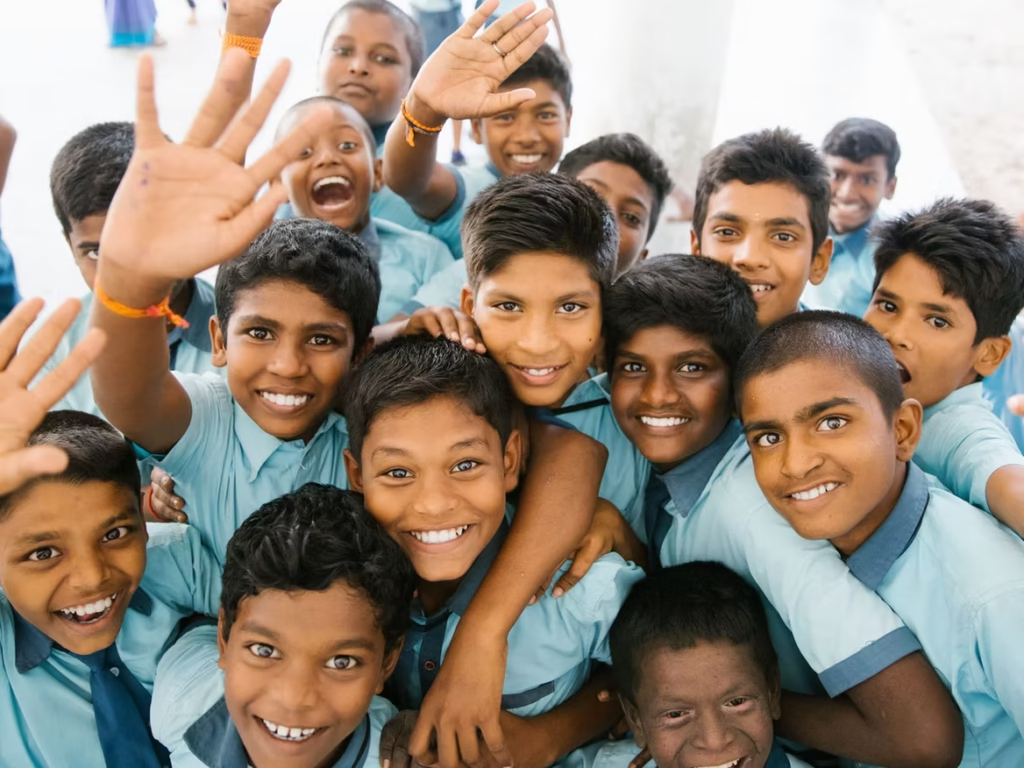
Uttarakhand – Picture green hills, snow-capped mountains, foggy roads, little cottage houses, and clean air – that’s what beautiful Uttarakhand is all about. Uttarakhand or the ‘Land of Gods’ is a state situated in the north part of India with 13 districts, sharing borders with both Nepal and China. The state is known for its extensive and scenic beauty, history, yogic and ayurvedic practices, and soaring surrounding mountains. It is one of the most popular destinations for both Indians and foreigners alike due to the always-present stunning beauty that just changes and shifts, and never disappears. Foggy, green landscape of Uttarakhand About Uttarakhand Within the state, there are many cities and spots most visited by travelers. This includes Dehradun, Kausani, Dehradun, Haridwar, and Nainital, some of the more popular cities with more population than the smaller communities spread out in the valley. We should also not forget Rishikesh, a city made by the popular band The Beatles’ 1968 visit and consequent stay, known for its scenic beauty and the many adventures it offers to travelers. Uttarakhand is also known for being the entry point of the Ganga or Ganges River, where all the tributaries join to make one of the largest widths of the river in India. Uttarakhand is popular for having various different opportunities for volunteering. Volunteering in India itself is something made easy by many NGOs, schools, communities, hospitals, etc. in the country, and many travelers opt for this while exploring India. Travelers are often plagued with the question of low-cost travel in India, and often volunteering is the way to not only explore the country but also help in the process. Why should you volunteer in Uttarakhand? Be a volunteer in the Himalayas!! Volunteering in Uttarakhand Widely categorized, some of the ways you can volunteer in Uttarakhand are (explained further in detail below ) : 1. Volunteering for Women and Community Empowerment 2. Volunteering in Rural Areas 3. Volunteering in Ashrams 4. Volunteering Through Teaching 5. Volunteering through Yoga and Wellness Activities 6. Volunteering as a Health Worker 7. Volunteering for Environmental and Sustainable Development purposes You can find crowded schools in Rishikesh or isolated rural tribes in the mountains of the state, large yogic ashrams, or small farming-driven communities widely across the state to volunteer in. It is important to note that all these options differ in their volunteering process. Some will provide housing and food in exchange for dedicated volunteering, while others will expect volunteers to find their own housing, although will guide them in the process, due to less area and funds. There are some NGOs and communities with strict guidelines and processes for selecting volunteers, and other villages yet may not have even experienced the joy of selfless giving that is volunteering and may welcome visitors with open arms. 1. Volunteering for Women and Community Empowerment The joy of sharing: women showing volunteers local handicraft Women’s education, development, and empowerment, broadly speaking Women empowerment are lacking in Indian society and most communities. In order for the country to grow, prosper, and respect each citizen, this is an undertaking needed to bring about equality between the sexes and ensure independence among women. Many organizations and independent villages/towns have specific volunteering programs focused on the development of communities, in particular the empowerment of women and girls. In these programs, volunteers usually focus on developing basic skills among the women of the community so that they may earn and support their families. Sometimes specific skills such as coding and writing are taught; other times general education and the betterment of the societies are focused on. Either way, the goal of the volunteer is to help out communities where female education is severely lacking and there is a need for the development and empowerment of girls and women. These programs may also focus on pre-teen and teen girls who are educated and empowered so that they are more educated, independent, skilled, and therefore successful. If volunteers are interested in this specific area of volunteering, there are many small villages and communities in Uttarakhand such as Chopta, Kalsi, Mana, etc. where women and schools can be approached for volunteering opportunities with girls and women. Although this is not a full-proof approach, it can be tried out. An easier way would be to find NGOs and organizations that have running programs on community and women’s development such as Ankur, an organization focused on this. 2. Volunteering in Rural Areas Smiling women working in a rural setting Rural villages and areas in India are often plagued with problems concerning even the most basic necessities. Uttarakhand is no different – the state is filled with independently running, mostly self-sufficient communities, often isolated from one another amongst the mountains. The same set of problems is present in all – lack of electricity, education, hygiene, ease of living, etc. There are many small projects volunteers can take up to improve the way of living in these places – for example, better-invented toilet systems, solving basic problems, teaching, helping with construction and odd jobs, etc. There is an immense opportunity for development in these places – and in the end, volunteers can feel satisfied they helped better a community. There is always scope to approach villages and areas where such tasks are always appreciated and there is no lack of hospitality. If you prefer organizations, there are many that allow for homestay and local food during the time you work as well as ample time to explore places nearby. There is a popular project in Kanda, Uttarakhand, the Rural Organisation for Social Elevation (ROSE) that interested volunteers can research and consider. Also, there are Government volunteer programs of which you can be a part. 3. Volunteering in Ashrams Ashram volunteers serving food to locals Ashrams are institutions made for the specific purpose of studying



